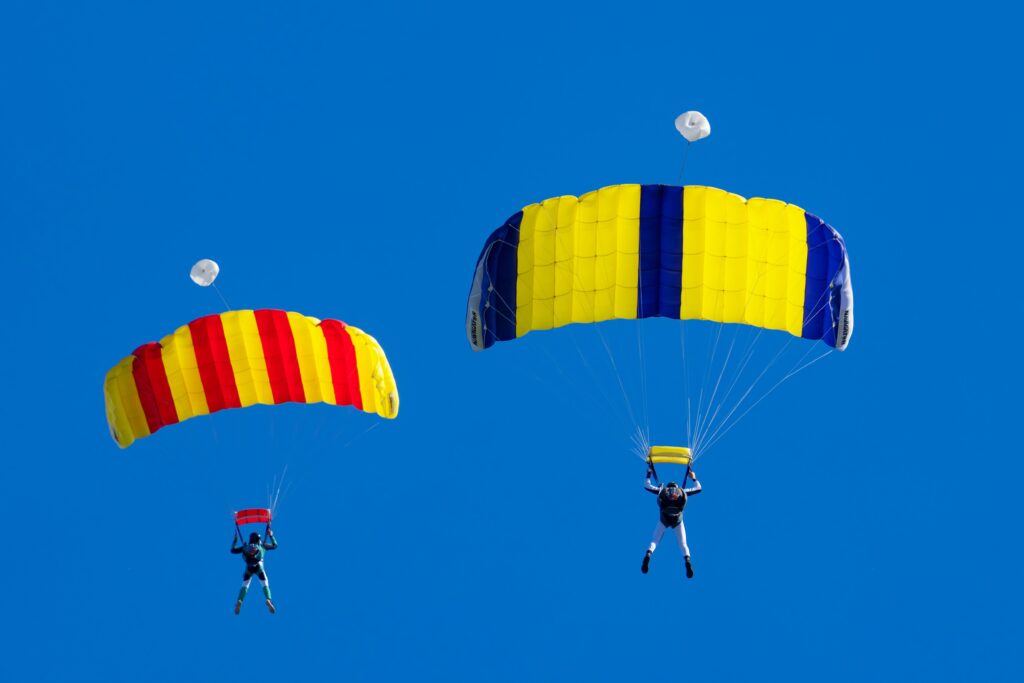Ready to Fly? Master the Skies with Our Skydiving Tips!
For the modern thrill-seeker, few activities can compare to the adrenaline rush and breathtaking experience of skydiving. Whether you’re a veteran adventurer or dipping your toe into extreme sports, skydiving offers a one-of-a-kind aerial perspective and a sense of freedom that’s unmatched. In this comprehensive list, you’ll discover all you need to know to get ready to fly with a skydiving adventure.

Get Ready to Fly: What to Expect from Start to Finish
Before you throw yourself out of a plane, it helps to understand the steps you’ll go through. Your skydiving experience begins with a briefing on safety protocols to get ready to fly and a session practicing the body positions you’ll use during freefall. On the edge of the aircraft, the door opens, and you’re ready. The jump height will vary, but you’ll experience speeds of around 120mph for a minute freefall. Following the exhilarating freefall, your instructor deploys the parachute, leading to a serene descent back to Earth. During training and the jump, remember to relax, breathe, and soak in the unparalleled views.
Learn the Lingo: How to Decode the Skydiving Jargon
Skydiving comes with its own language. Here are some key terms every aspiring skydiver should know in order to get ready to fly:
Types of Jumps
- Tandem Skydiving: You’re harnessed to a professional who manages the jump, freefall, and landing.
- Accelerated Freefall (AFF): After a short ground lesson, you jump with your own parachute, with two instructors gripping you to stabilize your body position.
- Static Line: A solo method where the parachute is deployed automatically upon exiting the aircraft.
Aerial Maneuvers
- Tracking: A technique for increasing horizontal separation between skydivers.
- Relative Work (RW): Formation skydiving where jumpers maneuver to join each other in predetermined shapes.
- Swooping: A low-altitude, high-speed landing Maneuver.
What to Wear and Bring: Get Ready to Fly!
What you wear can significantly influence your skydiving experience. It’s important to dress comfortably and appropriately for the weather. Go for athletic wear, and avoid loose items that could become entangled with your parachute. Wear secure footwear, like sneakers, as you’ll be landing on the ground. Your skydiving center will help you get ready to fly by providing you with safety equipment, including a jumpsuit, helmet, goggles, and altimeter. If you’re prone to cold, bring gloves and a hat, as temperatures can drop at higher altitudes.
Experience Matters: How to Choose the Right Drop Zone
Choosing the right drop zone is crucial for a safe and enjoyable skydiving experience. Research local drop zones and consider their reputation, safety records, and the views they offer. Are they certified by the United States Parachute Association (USPA)? Do they offer tandem jumps as well as solo training? Customer reviews can offer insights into the quality and atmosphere of the center—decide if you want a family-friendly vibe or an adrenaline-fueled atmosphere. Finally, consider the location and views—do you want to jump over mountains, beaches, or cities?
Get Ready to Fly: How to Prepare for the Adrenaline Rush
Nervous jitters are to be expected as you get ready to fly but so is the exhilarating rush you’ll feel once in freefall. To prepare mentally, review the training materials provided by your drop zone. Visualization and practicing slow, deep breaths can be helpful. Remember, you’re in good hands with experienced instructors who prioritize your safety and experience. Focus on the breathtaking views and the accomplishment you’ll feel after facing your fears head-on. Don’t forget to smile for the camera!
Relaxation & Stress Relief: Consider The Benefits of Skydiving
Aside from the obvious adrenaline rush, skydiving offers numerous benefits that go beyond the thrill factor. It can boost your confidence and self-esteem, as well as improve your mental and physical well-being. The exhilarating experience of freefall can also help relieve stress and anxiety, giving you a sense of mental clarity and relaxation. Additionally, skydiving allows you to push your limits and step out of your comfort zone, leading to personal growth and development.
Record the Jump: How to Relive Your Experience
After you’ve landed safely back on solid ground, you’ll want to relive your experience again and again. Many drop zones offer footage of your jump captured by a professional videographer. You may also have the option to rent a GoPro to capture your own point-of-view footage. Share your experience on social media, and don’t be surprised if you inspire others to take the leap themselves. The memories and sense of achievement from skydiving will stay with you long after you land back on Earth.
When to Obtain Your Parachuting License
Skydiving isn’t just about the jump—it’s a community and a sport. If you find yourself hooked after the first jump, consider becoming a licensed skydiver. There are several levels of certification with the USPA, requiring a minimum number of jumps and mastering certain skills. A license allows you to jump solo, participate in more advanced skydiving disciplines, and join a network of fellow skydivers. It’s a commitment, but one that offers endless possibilities for adventure and camaraderie.
Skydiving is an unforgettable adventure that offers a sense of freedom and accomplishment like no other. With proper preparation, the right mindset, and the eagerness to push your limits, you’re ready to take on the skies and experience this thrilling activity for yourself. Get ready to Fly!






